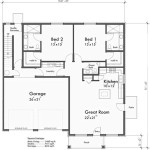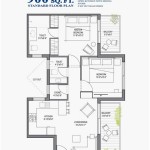In the realm of architecture and home design, a well-crafted house plan serves as the blueprint for a functional and aesthetically pleasing living space. A good house plan is a comprehensive document that outlines the layout, dimensions, and specifications of a building, guiding the construction process and ensuring that the final product meets the specific needs and desires of its occupants.
From sprawling mansions to cozy cottages, good house plans cater to a wide range of tastes and requirements. They consider factors such as the number of bedrooms and bathrooms, the flow of traffic between rooms, the placement of windows for natural light and ventilation, and the overall energy efficiency of the home. Whether you’re building a new home from scratch or renovating an existing one, a well-designed house plan can help you create a space that perfectly aligns with your lifestyle and aspirations.
In the following sections, we will delve into the essential elements of good house plans, exploring their significance and providing practical tips on how to choose and implement them for your own home-building or renovation projects.
Good house plans possess several important characteristics:
- Clear and detailed drawings
- Accurate dimensions and specifications
- Layout that optimizes space and flow
- Energy-efficient design
- Flexibility for future modifications
- Compliance with building codes
- Integration of sustainable features
- Reflects the homeowner’s needs and preferences
- Visually appealing and aesthetically pleasing
By incorporating these elements, good house plans lay the foundation for homes that are both functional and beautiful, meeting the specific requirements and aspirations of their occupants.
Clear and detailed drawings
Clear and detailed drawings are essential for good house plans. They provide a visual representation of the home’s design, allowing builders and homeowners to understand the layout, dimensions, and specifications of the building. These drawings should include:
- Floor plans: Floor plans show the layout of each floor of the house, including the placement of walls, doors, windows, and other features. They should be drawn to scale and include accurate dimensions.
- Elevations: Elevations show the exterior of the house from different sides. They should include details such as the height of the house, the pitch of the roof, and the placement of windows and doors.
- Sections: Sections show the interior of the house through vertical cuts. They can be used to illustrate the relationship between different spaces and to show details such as ceiling heights and the location of plumbing and electrical systems.
Clear and detailed drawings help to avoid errors during construction and ensure that the final product meets the homeowner’s expectations. They also allow for better communication between the architect, builder, and homeowner, reducing the risk of misunderstandings and costly changes during the construction process.
In addition to the basic drawings listed above, good house plans may also include other drawings such as:
- Site plans: Site plans show the location of the house on the property, as well as the placement of driveways, walkways, and other outdoor features.
- Landscape plans: Landscape plans show the placement of trees, shrubs, and other plants around the house. They can be used to create a cohesive and visually appealing outdoor space.
- Detail drawings: Detail drawings provide more detailed information about specific parts of the house, such as the construction of a fireplace or the installation of a kitchen cabinet.
Accurate dimensions and specifications
Accurate dimensions and specifications are essential for good house plans. They ensure that the house is built to the correct size and that all of the components fit together properly. Inaccurate dimensions can lead to costly errors during construction, such as walls that are not square or windows that are the wrong size. They can also make it difficult to furnish and decorate the home.
- Overall dimensions: The overall dimensions of the house include the length, width, and height. These dimensions should be accurate to within a few inches.
- Room dimensions: The dimensions of each room should be accurate to within a few inches. This includes the length, width, and height of the room, as well as the location of doors and windows.
- Window and door dimensions: The dimensions of windows and doors should be accurate to within a fraction of an inch. This ensures that the windows and doors will fit properly and that they will be weathertight.
- Construction details: The house plans should also include detailed specifications for the construction of the house. This includes information such as the type of foundation, the framing materials, and the roofing materials.
Accurate dimensions and specifications are essential for ensuring that the house is built to the correct size and that all of the components fit together properly. They also make it easier to furnish and decorate the home. By providing accurate dimensions and specifications, homeowners can avoid costly errors during construction and ensure that their new home meets their needs and expectations.
Layout that optimizes space and flow
A well-designed house plan optimizes space and flow to create a home that is both functional and comfortable. The layout should allow for easy movement between rooms and activities, without creating wasted space or bottlenecks. Here are some key considerations for optimizing space and flow in a house plan:
1. Open floor plans: Open floor plans are becoming increasingly popular, as they create a more spacious and inviting living environment. Open floor plans typically combine the living room, dining room, and kitchen into one large space. This allows for easy flow between these areas and makes it easier to entertain guests or keep an eye on children while cooking.
2. Traffic flow: When designing the layout of your house, it is important to consider the flow of traffic. The main traffic patterns should be clear and unobstructed, without any unnecessary detours or bottlenecks. This will help to create a more efficient and enjoyable living space.
3. Room adjacencies: The adjacencies of rooms can also have a big impact on space and flow. For example, it is often convenient to have the kitchen adjacent to the dining room, and the master bedroom adjacent to the master bathroom. By carefully considering the adjacencies of rooms, you can create a more efficient and user-friendly home.
4. Storage space: Adequate storage space is essential for keeping a home organized and clutter-free. When designing your house plan, be sure to include plenty of storage space, such as closets, pantries, and built-in shelves. This will help to keep your belongings out of sight and out of the way.
By following these tips, you can create a house plan that optimizes space and flow, resulting in a home that is both functional and comfortable.
Energy-efficient design
Energy-efficient design is an important consideration for any new home construction or renovation project. By incorporating energy-efficient features into your house plan, you can reduce your energy consumption and save money on your utility bills. Here are some key strategies for energy-efficient design:
1. Insulation: Insulation is one of the most important factors in energy-efficient design. It helps to keep your home warm in the winter and cool in the summer, reducing the amount of energy needed to heat and cool your home. Be sure to insulate your walls, attic, and foundation to the recommended levels for your climate zone.
2. Windows and doors: Windows and doors can be a major source of heat loss in a home. Choose energy-efficient windows and doors that are designed to minimize heat transfer. Look for windows and doors with low U-factors and high R-values. You should also consider installing storm windows and doors in colder climates.
3. Appliances: When choosing appliances for your new home, be sure to look for energy-efficient models. Energy-efficient appliances use less energy to operate, which can save you money on your utility bills. Look for appliances with the Energy Star label, which indicates that the appliance meets certain energy-efficiency standards.
4. Lighting: Lighting can also be a significant source of energy consumption in a home. Choose energy-efficient lighting fixtures and bulbs to reduce your energy use. Consider using LED bulbs, which are more energy-efficient than traditional incandescent bulbs.
By incorporating these energy-efficient features into your house plan, you can reduce your energy consumption and save money on your utility bills. You can also help to protect the environment by reducing your carbon footprint.
Flexibility for future modifications
A well-designed house plan should be flexible enough to accommodate future modifications. This is important for a number of reasons. First, your needs and lifestyle may change over time. For example, you may start a family and need more bedrooms, or you may retire and want to downsize to a smaller home. A flexible house plan can be easily modified to meet your changing needs.
Second, building codes and regulations may change over time. If your house plan is not flexible, you may need to make costly modifications to comply with new codes. A flexible house plan can be more easily adapted to meet new codes, saving you time and money.
There are a number of ways to design a flexible house plan. One way is to use modular construction. Modular homes are built in sections in a factory and then assembled on site. This allows for a great deal of flexibility in the design and layout of the home. You can easily add or remove modules to change the size and layout of the home as needed.
Another way to design a flexible house plan is to use open floor plans. Open floor plans allow for more flexibility in the use of space. You can easily reconfigure the furniture and layout of the home to meet your changing needs.
By following these tips, you can create a flexible house plan that can be easily modified to meet your changing needs. This will save you time and money in the long run, and it will ensure that your home is always a comfortable and enjoyable place to live.
Compliance with building codes
Building codes are regulations that govern the construction of buildings. They are designed to ensure that buildings are safe and habitable, and that they meet minimum standards for energy efficiency and accessibility. Building codes are typically set by local governments, but they can also be set by state or federal governments.
When designing a house plan, it is important to comply with all applicable building codes. This includes codes for structural safety, fire safety, electrical safety, plumbing safety, and energy efficiency. Failure to comply with building codes can result in delays and costly fines during the construction process. It can also lead to safety hazards and other problems down the road.
There are a number of ways to ensure that your house plan complies with building codes. One way is to hire a licensed architect or engineer to design your plan. Architects and engineers are familiar with building codes and can design plans that meet all applicable requirements.
Another way to ensure compliance is to use pre-approved house plans. Pre-approved house plans have been reviewed and approved by building code officials, so you can be confident that they meet all applicable codes. You can find pre-approved house plans online or through home builders.
Regardless of how you choose to design your house plan, it is important to make sure that it complies with all applicable building codes. This will help to ensure that your home is safe, habitable, and meets minimum standards for energy efficiency and accessibility.
Integration of sustainable features
Sustainable features are becoming increasingly important in home design. These features can help to reduce your environmental impact, save money on energy costs, and create a healthier and more comfortable living environment. Here are some key sustainable features to consider integrating into your house plan:
- Energy efficiency: Energy-efficient features can help to reduce your energy consumption and save money on your utility bills. Examples of energy-efficient features include insulation, energy-efficient windows and doors, and energy-efficient appliances. You can also consider installing solar panels or a geothermal heating and cooling system to further reduce your energy consumption.
- Water conservation: Water conservation features can help to reduce your water consumption and save money on your water bills. Examples of water conservation features include low-flow toilets, low-flow shower heads, and drip irrigation systems. You can also consider installing a rainwater harvesting system to collect and use rainwater for irrigation or other non-potable purposes.
- Indoor air quality: Indoor air quality is important for your health and well-being. You can improve indoor air quality by using low-VOC (volatile organic compound) paints and finishes, and by installing an air filtration system. You can also improve indoor air quality by ventilating your home regularly and by avoiding smoking indoors.
- Sustainable materials: Sustainable materials are materials that are produced in a way that minimizes environmental impact. Examples of sustainable materials include recycled materials, renewable materials, and locally sourced materials. You can use sustainable materials in a variety of ways in your home, such as using recycled glass countertops, bamboo flooring, or cork tiles.
By integrating sustainable features into your house plan, you can reduce your environmental impact, save money on energy and water costs, and create a healthier and more comfortable living environment. You can also future-proof your home against rising energy and water costs, and make it more appealing to potential buyers.
Reflects the homeowner’s needs and preferences
A good house plan should reflect the homeowner’s needs and preferences. This includes the number of bedrooms and bathrooms, the size and layout of the rooms, and the overall style of the home. The plan should also take into account the homeowner’s lifestyle and how they plan to use the space.
For example, a family with young children may need a home with more bedrooms and bathrooms than a couple without children. A homeowner who loves to cook may want a kitchen with a large island and plenty of storage space. A homeowner who works from home may need a home with a dedicated office space.
The homeowner’s preferences should also be reflected in the style of the home. For example, a homeowner who prefers a traditional style may want a home with a symmetrical facade and a pitched roof. A homeowner who prefers a more modern style may want a home with a flat roof and large windows.
By taking into account the homeowner’s needs and preferences, a good house plan can create a home that is both functional and beautiful, and that meets the specific requirements of its occupants.
In addition to the basic needs and preferences of the homeowner, a good house plan should also consider the following factors:
- The size and shape of the lot
- The climate and weather conditions
- The homeowner’s budget
- The homeowner’s future plans
By considering all of these factors, a good house plan can create a home that is not only beautiful and functional, but also a good investment for the homeowner.
Visually appealing and aesthetically pleasing
A good house plan should also be visually appealing and aesthetically pleasing. This means that the home should have a pleasing appearance, both inside and out. The exterior of the home should be attractive and inviting, and the interior should be well-designed and comfortable.
There are a number of factors that contribute to the visual appeal of a home. These include the overall design of the home, the choice of materials, and the landscaping. The home should be designed in a style that is appropriate for the neighborhood and the surrounding environment. The materials used should be of good quality and should complement each other. The landscaping should be well-maintained and should enhance the overall appearance of the home.
The interior of the home should be designed to create a comfortable and inviting atmosphere. The layout of the rooms should flow well, and the rooms should be well-proportioned. The choice of furniture and decorations should reflect the homeowner’s personal style.
By considering all of these factors, a good house plan can create a home that is both visually appealing and aesthetically pleasing. This will make the home more enjoyable to live in and will increase its curb appeal.
In addition to the factors discussed above, there are a number of other things that can be done to enhance the visual appeal of a home. These include:
- Using color effectively
- Adding architectural details
- Creating outdoor living spaces
- Accessorizing with plants and flowers
By following these tips, you can create a home that is both beautiful and functional, and that reflects your personal style.









Related Posts








